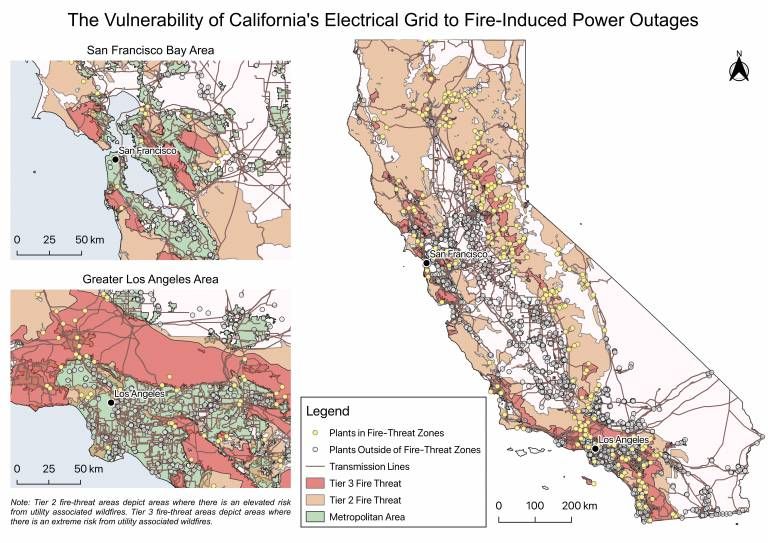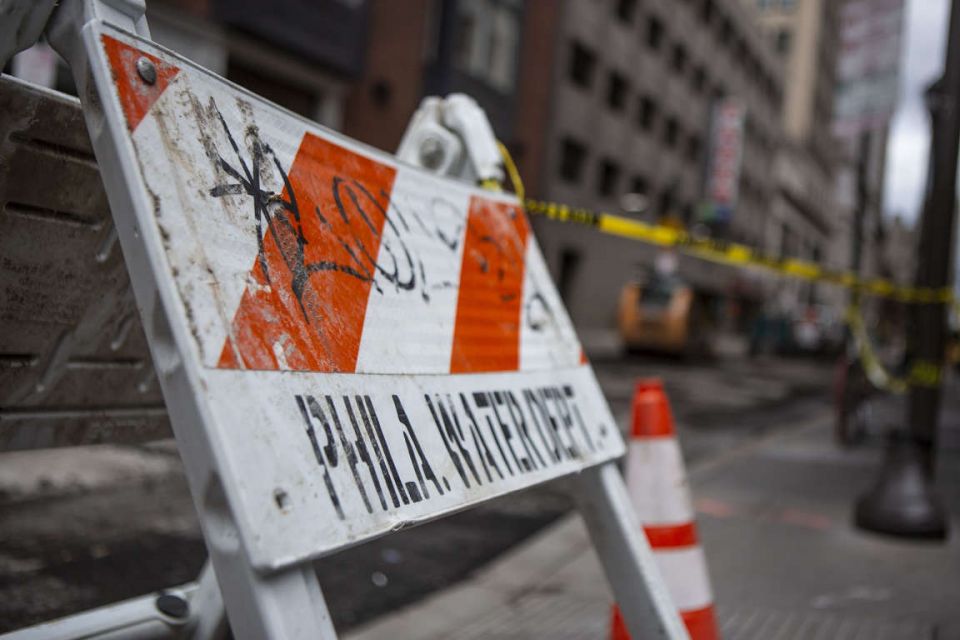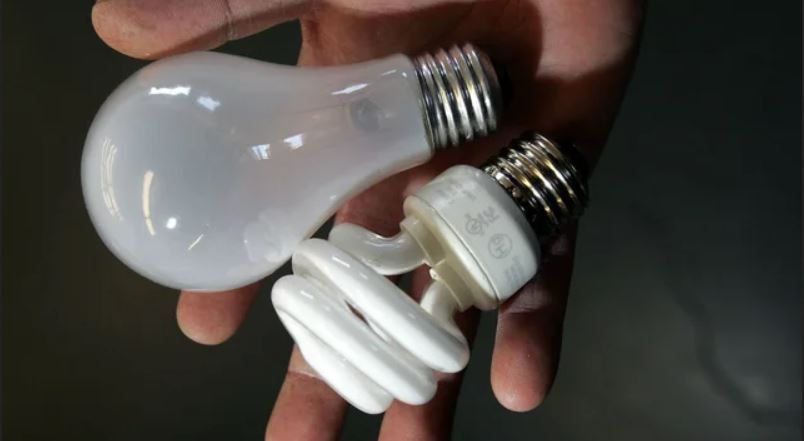
Rosenthal, A., Leone, B., Kenner, A., Adams, J., Morgan, S. (2021, March). "Energy in COVID-19: March 2021 Media Brief." Energy in COVID-19. The Energy Vulnerability Project. Platform for Experimental and Collaborative Ethnography. Retrieved from https://energyrights.info/content/march-2021-media-brief-energy-covid-19
Mainstream definitions of disaster usually focus on the suddenness of disaster, but STS researchers challenge this notion. They argue that the sudden onset of a global pandemic and the increase in energy insecurity that followed were the result of years of political, social, and economic forces culminating in compounding disasters (Fortun, Choi, and Jobin 2017). In an attempt to show how political, social, and economic conditions are leading towards a climate disaster that our society is woefully underprepared for, students at the Energy Systems and Data Analytics MSc created a spatial map showing different potential energy based disasters (UCL 2021). These maps could assist in disaster preparedness if they are able to sway actors involved in decision-making. One of their maps is titled “The Vulnerability of California's Electrical Grid to Fire-Induced Power Outages.” Such a vulnerability was also uncovered by a new report released by the Government Accountability Office (GAO). Extreme weather conditions, such as wildfires or flood damage, could lead to energy shortages in the United States (Frazin 2021). What tools are available to address both environmental and political conditions?

Stieglitz-Courtney M, (2020, March 31) "Students Create Spatial Visualisations Using Energy Data" UCL https://www.ucl.ac.uk/bartlett/energy/sites/bartlett_energy/files/styles...
STS scholars define four ways officials respond to disasters: mitigation, preparedness, response, and recovery (Fortun, Choi, and Jobin 2017). Mitigation is an attempt to alleviate the disaster once its presence is made clear, while preparedness is what steps are taken to reduce the damage of the disaster when mitigation is either ignored or pursued to its fullest extent. In Kelly Flanigan’s State Impact article, How Pa. Can Prevent a Power Crisis like The One that Knocked Out Texas, she outlines mitigation and preparedness steps Pennsylvania can take in order to avoid a disaster akin to the one that took place in Texas during the start of 2021. Such measures include the production of more local power, wasting less energy through more insulated homes, schools, and offices, and creating ways to share electricity across state borders more easily (Flannigan, 2021). Such measures are both mitigation (wasting less energy and producing energy more locally with renewables that would reduce greenhouse gas emissions) and preparedness (facilitating easy energy sharing across state borders).
At the time these articles were written, Texas was either in the infancy of or not at the recovery stage -- the fourth and final stage according to STS scholars. The remaining two articles highlight the third stage, response. The first article indicates that fossil fuel actors are behind the responses made since the disaster. Alex Epstein, a founder of the climate change-skeptical, for-profit think tank Center for Industrial Profit, reportedly prepared talking points for political actors in Texas via Zoom calls and emails, including to Gov. Greg Abbott (Dellinger, 2020). These talking points are available on his website, aptly titled https://energytalkingpoints.com/. Some of the advice available includes calling yourself a “climate thinker” instead of a climate change denier and that humans are an adaptable species that will survive climate change. Texas has also responded by allowing utility regulators to cut $4.1 billion in inflated electric bills that resulted from the disaster, though Governor Abbott received backlash from members of the utility commission including Arthur D’Andrea, who downplayed the severity of the increased electric bills (Singh 2021). The response stage could play a key role in how the surrounding states respond to similar disasters as well as how Texas will respond to the unprecedented heat waves currently occurring in other parts of the country. The recovery stage will likely be focused on community and family networks and the grid’s repair depends largely on private companies.
UCL. 2021. “Students Create Spatial Visualisations Using Energy Data.” UCL Energy Institute. March 31, 2021. https://www.ucl.ac.uk/bartlett/energy/news/2021/mar/students-create-spat....
Frazin, Rachel. 2021. “Climate Change Will Have ‘far-Reaching’ Impacts on Electric Grid, Watchdog Says.” Text. TheHill. March 10, 2021. https://thehill.com/policy/energy-environment/542557-climate-change-will....
Flannigan, Kelly, 2021. “How Pa. Can Prevent a Power Crisis like the One That Knocked out Texas | Opinion.” n.d. Accessed June 22, 2021. https://www.inquirer.com/opinion/commentary/texas-power-crisis-grid-penn....
Dellinger, A. J. n.d. “Texas Officials Responded to the Winter Storm with Propaganda They Got from a Pro-Fossil Fuel Think Tank.” Mic. Accessed June 22, 2021. https://www.mic.com/p/texas-officials-responded-to-the-winter-storm-with....
Singh, Gary McWilliams, Kanishka. 2021. “Texas AG Says Retroactive Power-Price Cut Okay; Regulator Ousted.” Reuters, March 17, 2021, sec. Energy & Environment. https://www.reuters.com/article/us-usa-weather-texas-puc-idUSKBN2B90EC.
This Media Brief contains three main themes. The first theme uses STS understandings of disaster to exmaine recent articles on the Texas Grid failure, climate change, and Pennsylvania's potential for a grid failure. The next theme is on evolving energy assisstance, which as changed significantly through COVID-19 and the American Rescue Plan. Finally, the last theme is on changing policy and regulations. This theme discusses how energy regulations such as shower head regulations are being changed. Also included is a talk of net neutrality and RGGI.

Khalifa H (2021, Feb 16) "Philadelphia Seeks 16.9% Water Rate Increase, Citing Revenue Erosion From Pandemic." The Philadelphia Inquirer, https://www.inquirer.com/business/philadelphia-water-rate-increase-histo...
As energy services change, evolve and adapt to climate change and the COVID-19 pandemic, new forms of energy assistance arise. The Department of Health and Human Services has announced a new federal program titled the Low-Income Home Water Assistance Program. LIHWAP will be a sister program to LIHEAP and function similarly (NEADA, 2021). The American Rescue Plan allocated $1.1 billion dollars to the new program, less than the $4.1 billion given to LIHEAP (NEADA, 2021). LIHWAP comes at a time when water rates are expected to increase in Philadelphia by 17.1%. This water rate increase would boost a typical customers’ bill by $11.27 a month, with the agency citing COVID as their main reason for doing so (Maykuth, 2021). A virtual hearing on the water rate increase was held Tuesday, March 16th and Thursday, March 18th, with members of The Energy Rights Project in attendance (Philadelphia Water Department, 2021). Many of the participants wondered why the Water Department had continued with the proposed rate increase rather than use federal funding from the American Rescue Plan to offset the costs of COVID-19 instead of a rate increase.
In Pennsylvania, internet assistance is primarily given through the Internet Essentials Program, which allows qualifying families to receive low-cost broadband internet (or a mobile hotspot if their living situation does not allow for broadband). This program is a public-private partnership between the City of Philadelphia and Comcast; the latter recently announced they were committing an additional $1 billion to the program. How this money is to be spent has yet to be announced. However, Comcast is also planning to invest in “Lift Zones”, public spaces with free access to high speed internet, computers, career services and more that is yet to be announced (Rose, 2021). If the Internet is to be considered energy in the same vein that electricity and water are, “Lift Zones” are unlike any other form of energy distribution/assistance. There is no Lift Zone where you have to physically go someplace else to get free access to water or electricity. The COVID-19 pandemic has also shown that at-home internet is urgently needed in underserved areas of Philadelphia. Libraries are closed down and other areas of internet access are unsafe for many who need immediate access for remote learning or work.
The pandemic brings with it new ways for energy vulnerabilities to materialize. The vaccine rollout is one such example, with an internet connection being required to make an appointment in many parts of the country. Areas of Philadelphia with low internet access are also among those with the lowest vaccination rates (Laughin and Lai, 2021).
If crises give rise to new social and infrastructural policies, these policies may sometimes be experimental innovation; or, versions of existing policies that leaders hope will be enough to close gaps in service during dangerous times.
NEADA, "HHS Announces Water Assistance Program ", contributed by Morgan Sarao, The Energy Rights Project, Platform for Experimental Collaborative Ethnography, last modified 5 April 2021, accessed 22 June 2021.
NEADA, "LIHEAP and Utility Assistance Funding Status: Regular & Pandemic-Related Funding", contributed by Morgan Sarao, The Energy Rights Project, Platform for Experimental Collaborative Ethnography, last modified 5 April 2021, accessed 22 June 2021.
Philadelphia Water Department. (2021). “COVID-19: Our latest updates as Philadelphia responds to COVID-19” Retrieved from https://water.phila.gov/covid-19/
Rose, Kennedy, 2021. “Comcast Commits $1B to Low-Income Internet Essentials Program.” n.d. Philadelphia Business Journal. Accessed June 23, 2021. https://www.bizjournals.com/philadelphia/news/2021/03/24/comcast-commits-1b-low-income-internet-essentials.html. https://energyrights.info/node/1401
This was my second media brief, my first being from almost over a year ago. Courtesy of James, I have come to understand the depths of the Texas blackout and the extent to which it will be a catalyst for the impacts of climate change on the United States. I firmly believe it will be seen as the start of a new era of climate crisis in the United States by the general public. The idea that climate change is hard for humans to grasp due to the far away nature of its effects may soon be a pointless argument if what occurred in Texas is a premonition of what is to come. I believe that STS 'understanding of disasters is a fantastic framework to analyze Texas as well, especially the four steps of disaster I outline in this PECE essay. As for the other articles, they were fascinating reads. I mentioned this in my PECE essay, but it does seem like the Biden administration is both trying to move forward, beyond the energy policy of all previous administrations while also trying to get us back to Obama level regulations. Indeed, this balancing act will lead to interesting outcomes. The water rate increase is something our team has been keeping an eye on for the last few months I hope future media briefs cover some of the new water assistance programs mentioned in this media brief like LIWAP.

Getty Images (2021, Feb 19) "Biden Energy Dept Orders Sweeping Review of Trump Energy Rules" The Hill https://thehill.com/wp-content/uploads/sites/2/2019/11/lightbulbs_110420...
Just as energy assistance is expected to change and evolve as the world moves beyond COVID (at least, in some parts of the world), so too are energy policies and regulations. Previous media briefs have shown how the pandemic has impacted the renewable energy industry, for example. The most recent development comes from the Biden Administration, which has released what is in their $2 trillion infrastructure proposal.
The plan includes $621 billion for transportation: $115 billion to modernize 20,000 miles of highways, roads, and main streets, $20 billion to improve road safety, $85 billion towards modernizing existing transit and help public transit agencies meet their demands (this would double public transit funding), another $80 billion would go specifically to Amtrack’s repair backlog and modernize the northeast corridor line, $25 billion to airports, $17 billion to waterways, ports, and ferries, and lastly, $174 billion to the electric vehicle industry (Lubhy, Lobosco, Sullivan, 2021). This budget shows that, while we are making progress in modernizing America’s public transit, walkable cities are still nowhere in the country's foreseeable future. Our path forward is looking more like a slightly greener version of our current trajectory rather than a radical shift towards green public transit that many on Biden’s left had hoped for.
This is not to say that Biden is not intent on reversing some of the Trump administration's anti-green energy decisions, as his energy department has recently ordered a review of the former administration’s energy rules (Beitsch 2021). Among the most important was the Trump administration's decision to remove the energy efficiency standards for roughly half the bulbs on the market. The next decision the Biden administration seeks to reverse is Trump’s decision on what counts as a showerhead. Without getting too technical, Trump allows for different components of a showerhead to count as individual fixtures, allowing for companies to sidestep the 2.5 gallons per minute limit (Beitsch 2021).
Keeping with the theme of reversing Trump era decisions, Pennsylvania Senate Democrats have recently joined with House Democrats to conduct a hearing on net neutrality policy. Early into Trump’s presidency, the FCC repealed net neutrality, a regulation requiring that all Internet Service Providers treat data equally (PA Senate Democrats, 2021). This means that Comcast couldn’t slow down Netflix in order to promote their own streaming service, for example. Since then, numerous states have enacted net neutrality on a local level, with Pennsylvania potentially joining them. The current state of energy policy regulation in the United States is that of simultaneously getting back to the Obama era and, hopefully, going beyond it.
One of the challenges green energy supporters will face in the coming years is the fossil fuel industry and lobbyists that gained more influence under the Trump administration. This can be seen in Pennsylvania, with many state legislatures signing off on a letter written by lobbyists for coal, oil, and gas companies against Pennsylvania’s proposed plan to join the Regional Greenhouse Gas Initiative (Vardi, 2021).
CNN, Tami Luhby, Katie Lobosco and Kate Sullivan. n.d. “Here’s What’s in Biden’s Infrastructure Proposal.” CNN. Accessed June 23, 2021." https://www.cnn.com/2021/03/31/politics/infrastructure-proposal-biden-ex....
Beitsch, Rebecca. 2021. “Biden Energy Dept Orders Sweeping Review of Trump Energy Rules.” Text. TheHill. February 19, 2021. https://thehill.com/policy/energy-environment/539651-biden-energy-dept-o....
PA Senate Democrats, 2021. “PA Senate Democrats Joined House Democrats for Net Neutrality Policy Hearing.” EIN News. March 29, 2021. https://www.einnews.com/pr_news/537747876/pa-senate-democrats-joined-hou....
Vardi, Itai, 2021, “Coal, Gas Lobbyists Behind PA Officials’ Letters Against RGGI, Emails Show.” 2021. Energy and Policy Institute (blog). March 4, 2021. https://www.energyandpolicy.org/coal-gas-lobbyists-behind-pa-officials-l....
Vardi, Itai, 2021, “Coal, Gas Lobbyists Behind PA Officials’ Letters Against RGGI, Emails Show.” 2021. Energy and Policy Institute (blog). March 4, 2021. https://www.energyandpolicy.org/coal-gas-lobbyists-behind-pa-officials-l.... https://energyrights.info/node/1830